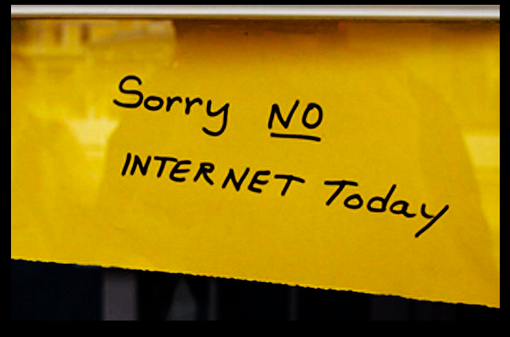There has been a paradigm shift in gaming consumption, with gamers earlier enjoying hours of free gameplay to increased openness to paid competitive gaming. A new report titled “Global Paid Competitive Gaming Report 2023 that was launched recently at the Game Developer Conference in San Francisco, revealed that the PCG market is expected to reach USD 16 billion by 2024. India is the second largest PCG market and is projected to grow to USD 3.5 billion by 2024 thus showcasing value in paid gaming, a drastic change from the traditional model of free gaming.
Read more: Esports on PC & console: Business trends and gamer behaviour
It will be interesting to deep dive into the different payment models and the proclivity of today’s consumers towards skill gaming vs traditional gaming.
Comprehending gaming-on-the-go and paid competitive gaming
Gaming-on-the-go, which typically involves playing games on mobile devices or portable gaming consoles, offers convenience and accessibility. Gamers can play their favourite games anywhere and anytime, without needing to be tethered to a console or a computer. Mobile gaming has seen a surge in popularity in recent years, and many gamers enjoy the wide range of games available on mobile app stores or on the cloud platforms.
Some gamers may enjoy both gaming-on-the-go and competitive gaming, depending on their seriousness for games, mood, and availability. However, if forced to choose one, it ultimately comes down to what the gamer values more: convenience and accessibility or the challenge and competition of paid gaming
Paid competitive gaming, on the other hand, offers a more intense and competitive experience. Gamers can compete against other skilled players for cash prizes or other rewards. Competitive gaming requires dedication, practice, and often a high level of skill, which can be a draw for some gamers who thrive on the challenge.
Some gamers may enjoy both gaming-on-the-go and competitive gaming, depending on their seriousness for games, mood, and availability. However, if forced to choose one, it ultimately comes down to what the gamer values more: convenience and accessibility or the challenge and competition of paid gaming.
Skill gamers & traditional gamers, deep dive into the psychology of the Indian gamer
The psychology of Indian gamers can vary widely depending on the type of gamer, their individual characteristics, and their gaming preferences. However, we can broadly categorize Indian gamers into two groups – skill gamers and traditional gamers.
Skill Gamers
Skill gamers are those who prefer competitive and challenging games such as multiplayer online battle arena (MOBA) games, first-person shooter (FPS) games, and battle royale games. They tend to be highly competitive and strive to improve their gaming skills and strategies to win. These gamers tend to exhibit the below traits;
Competitive: Skill gamers are highly competitive and driven to win. They thrive on the challenge and the thrill of competing against other skilled players.
Goal-oriented: Skill gamers are extremely goal-oriented and focus on achieving specific objectives within the game. They are driven to improve their skills and strategies to achieve their goals.
Resilient: Skill gamers are highly resilient and able to bounce back quickly from setbacks and losses. They view challenges as opportunities to learn and grow.
Risk-taking: Skill gamers tend to be more risk-taking and willing to take calculated risks to achieve their objectives.
Traditional Gamers
Traditional gamers, on the other hand, are those who prefer games that are more relaxing and less competitive such as puzzle games, simulation games, and role-playing games. They tend to be more casual and play games for entertainment rather than competition. These gamers tend to exhibit the following psychological traits:
Relaxed: Traditional gamers tend to be more relaxed and less focused on winning. They play games for entertainment and to unwind after a long day.
Creative: Traditional gamers tend to be more creative and enjoy games that allow them to express their creativity and imagination.
Social: Traditional gamers tend to be more social and enjoy playing games with friends and family. They view gaming as a way to connect with others and build relationships.
Patient: Traditional gamers tend to be more patient and willing to invest time and effort to achieve their objectives within the game.
Overall, the psychology of Indian gamers can be complex and multifaceted. But, understanding the key traits and motivations of different types of gamers can help game developers and marketers create games that cater to their specific needs and preferences.
Do we not see merit in free game play?
There is definitely merit in free-to-play gaming, especially in the mobile gaming market where it has become the dominant business model. Free-to-play games can be enjoyed by a wide audience without requiring upfront payment, which can help increase accessibility and exposure for the game. Additionally, free-to-play games often rely on in-app purchases to generate revenue, which allows players to spend money only if they want to, while also providing an avenue for developers to earn money.
Overall, free-to-play gaming can be a valuable and enjoyable experience for players, but it is important for developers to strike a balance between monetization and fair gameplay
However, it is important to note that not all free-to-play games are created equal. Some free-to-play games can rely too heavily on pay-to-win mechanics, which can create an unfair advantage for players who are willing to spend money. Overall, free-to-play gaming can be a valuable and enjoyable experience for players, but it is important for developers to strike a balance between monetization and fair gameplay.
Perks of paid competitive gaming & its impact on gamers
Paid competitive gaming, or esports, has become a global phenomenon in recent years. Esports refers to organized, competitive video gaming that is often broadcasted online or in-person to large audiences, with participants competing for prizes and money. The industry has grown significantly, with revenue expected to reach $1.08 billion by 2024.
One of the main benefits of paid competitive gaming is the financial reward it offers to players. Professional gamers can earn significant amounts of money by competing in tournaments, winning prize money, and securing sponsorship deals. This financial incentive has led to more people pursuing esports as a career, which in turn has contributed to the growth of the industry.
Another benefit is the opportunities it offers for gamers to showcase their skills and compete against other top players from around the world. This can help players improve their skills and develop a deeper understanding of the game, as well as provide them with opportunities to form connections and networks within the industry.
Read more: Esports tie ups with other tech: FinTech cloud & cybersecurity
There are also potential negative impacts associated with paid competitive gaming such as the risk of addiction and burnout among players. The pressure to succeed and the amount of time required to train and compete can take a toll on players’ mental health and well-being, leading to issues such as anxiety, depression, and sleep deprivation. It can also impact the broader gaming community with financial rewards leading to a shift away from the social and collaborative aspects of gaming, as players become more focused on winning and individual achievement.
In conclusion, the Indian gaming industry has opened avenues for larger investments, monetization and evolved gamers looking for seamless experiences.

Guest contributor Gins Lukachan is the Associate General Manager of Zynga, a developer of popular social games. Any opinions expressed in this article are strictly that of the author.












